Seat belts reduce serious crash-related injuries and deaths by about half, according to the National Highway Traffic Safety Administration. The simple act of wearing a seat belt is the single most effective way to reduce the risk of fatality in a crash. So why do millions of people not buckle up on every trip? Let’s debunk five common myths about wearing seat belts that are outdated or just plain wrong.
5 Common Misconceptions About Seatbelts
#1: Seat belts are uncomfortable and restrict my movement.
Wearing a seat belt should not cause any discomfort or pressure when adjusted properly. Seat belts have come a long way in the comfort department since becoming a mandatory feature in cars in the 1960s. Technological advancements like polyester webbing and pretensioners, which eliminate slack in the event of a crash, have made seat belts more comfortable for the wearer. If you want to customize your fit, you can find clips and extenders at your local dealer or auto parts store.
With children, the shoulder belt should fit across the shoulder and chest, and the vehicle lap belt should fit across the upper thighs. (Children are typically between the ages of 8 and 12 years old when they are ready for a seat belt. A good test is if their knees bend at the edge of the seat when backs and bottoms are pressed against the vehicle seat back.)
Pregnant women should wear both the lap belt and the shoulder strap, ensuring a snug fit. Lap belts should be buckled under the belly and over hips. Never place the lap belt across your belly. The shoulder strap should go between the breasts and off to the side of the belly. Never place the shoulder strap under the arm.
#2: Seat belts trap you in your vehicle during a crash.
This myth is often associated with fire- and water-related accidents, which account for less than one-half of one percent of all crashes. More importantly, seat belts can actually prevent you from being knocked unconscious, which can increase your chances of escaping during an accident.
#3: I’m just going up the block for groceries. I don’t need to wear a seat belt around town.
Think again. Routine, seemingly low-key trips can be deceptively dangerous. Did you know that most traffic-related deaths happen within 25 miles from your house and at speeds less than 40 mph, according to the National Highway Traffic Safety Administration? Don’t take any chances. Your life and the lives of your passengers are at stake.
#4: I don’t have time to put on my seat belt.
It only takes about three seconds to strap on your seat belt. That’s less time than it takes to tie your shoe. Even if you’re buckling up 20 times a day, that’s only one minute of your day.
#5: My car has air bags, so I don’t need to wear a seat belt.
Air bags are designed to protect a buckled passenger, not an unbuckled one. Seat belts secure you in the proper position to benefit from an air bag deployment. If you’re not wearing your seat belt, you’re in danger of sliding underneath the air bag, colliding with the dashboard or windshield, or being ejected from the front seat. Air bags are a supplemental form of protection and most are designed to deploy in moderate-to-severe frontal crashes, which doesn’t cover all situations. Using air bags in conjunction with seat belts is your best bet.
The History Of Seatbelts
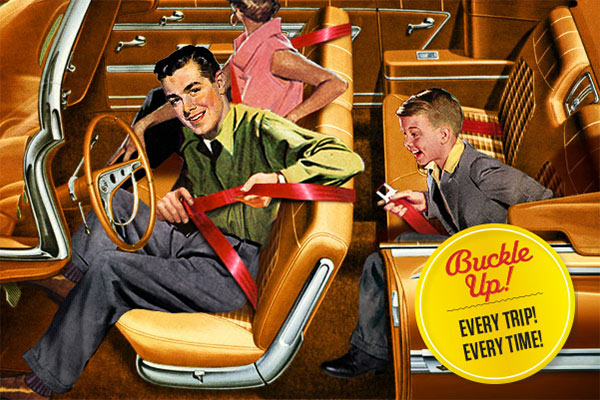 Forget statistics, campaigns or pleas from car manufacturers. As the history of the seatbelt shows, the most effective way to get drivers and passengers to buckle up is to hit them where it hurts: in their wallets.
Forget statistics, campaigns or pleas from car manufacturers. As the history of the seatbelt shows, the most effective way to get drivers and passengers to buckle up is to hit them where it hurts: in their wallets.
Although lap belts were offered in cars as early as the 1950s, they were snubbed by many until 1984, when New York became the first state to crack down on car safety. “The thing that started to get people to buckle up in large numbers was simply having state laws with a minimal fine of $25 or $50 for not buckling up,” says Mike Ciccone, senior director of crashworthiness evaluations at Insurance Institute for Highway Safety (IIHS).
The importance of using seatbelts is no joke. No other quick daily habit—not even eating your veggies—has such life-changing benefits. “Lap and shoulder belts are about
50 percent effective in preventing fatal injuries to front‐seat occupants in crashes of all kinds,” says Ciccone. The numbers are staggering: Safety belts saved 12,802 lives in 2014, according to the National Highway Traffic Safety Administration (NHTSA). Compare that with the early 1980s, when just roughly 11 percent of front-seat passengers wore belts. So when did people buckle down on buckling up? Here, a look back at the invention, technology and laws behind seatbelts.
1885: The U.S. Patent Office issues the first seatbelt patent.
1949-50: Nash Motors Company offers lap belts in certain car models.
1959: Volvo engineer Nils Bohlin invents the first three-point safety belt in Sweden by combining the lap belt and shoulder strap into one continuous belt that could be buckled with one hand. The invention’s open patent allows other manufacturers to adopt the game-changing design.
1968: The first federal law regarding seatbelts—called the Federal Motor Vehicle Safety Standards—is passed, requiring all new cars sold in the U.S. to feature lap or shoulder belts in the front seats and lap belts in the back seats.
1984: New York passes the first “primary enforcement law,” in which a police officer can pull over and ticket a driver just for not wearing a seatbelt. Thirty-four states now have primary enforcement laws, while 15 states have secondary laws, which means drivers pulled over for another reason can receive a ticket for not wearing a seatbelt. The fear of getting ticketed led to a quick jump in seatbelt usage for those states, which meant fewer deaths and injuries. People pay more attention to primary laws, and buckle up more. According to IIHS, if all states with secondary laws had primary laws instead, their passenger deaths would decrease by 7 percent.
1993: North Carolina’s “Click It or Ticket” campaign, which involved TV ads and billboards highlighting the cost of getting pulled over, dramatically increases seatbelt use from
65 percent to 81 percent. A decade later, the “Click It or Ticket” campaign goes national.
2015: States with primary enforcement laws report seatbelt usage at 91 percent, and states with secondary enforcement laws (or no law at all) report seatbelt usage at 79 percent.
Living in such a rapidly changing world, it’s easy to take innovations for granted, but remember that seatbelts were designed with one goal in mind: to protect you. Don’t forget to buckle up on your next ride—and that goes for everyone, especially kids and even pets.
You always buckle up … right? Good. GEICO offers discounts to good drivers. See how much you could save.
Next article: 5 Common Driving Myths Debunked
By Stephanie Levis and Kara Cutruzzula



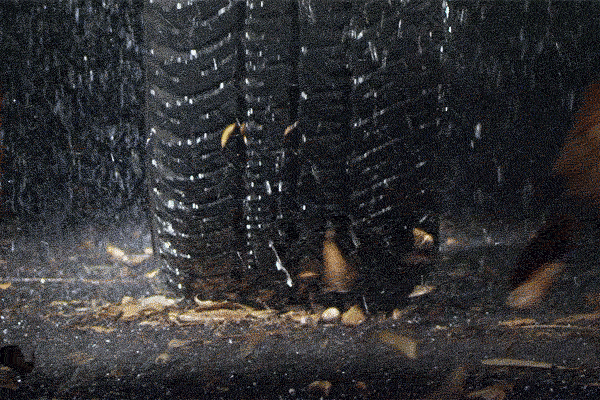
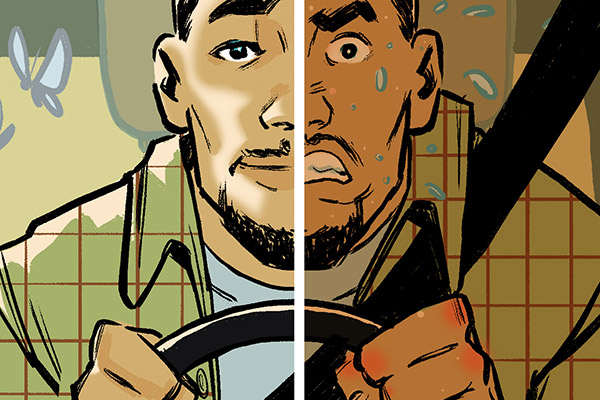
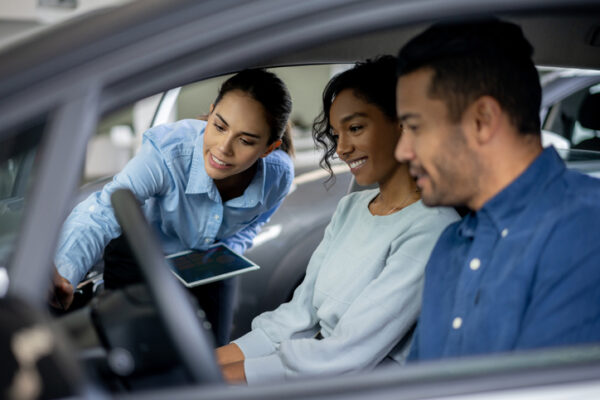
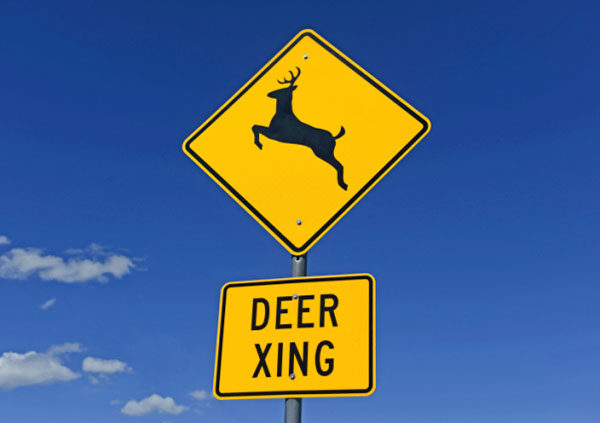
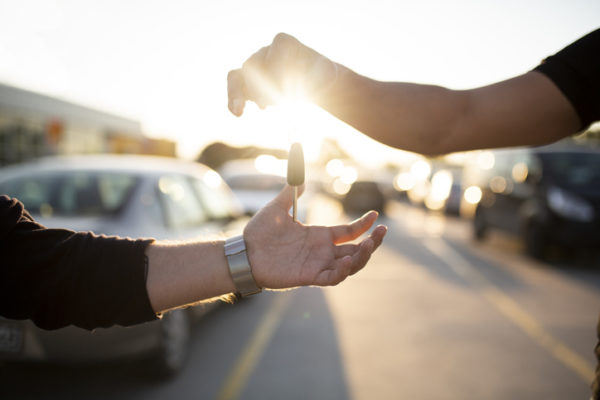

Donna Carver says,
I am an RN. I’ve seen accident victims that had their belt on and victims that did not have them on .Most with belts walked away. The ones without were DOA or paralyzed. Big difference. DMC
David Colins says,
a very comprehensive factual story thanks. In 1975, at 26 yrs of age in my third year of marriage with a 2 yr old daughter, while driving alone sitting on my seatbelt I struck a utility pole on a 2 lane country road. i was in a coma from a traumatic brain injury and a broken neck with c 7 spinal cord injury. USE YOUR SEAT BELT!
Jessica Reinhardt says,
good
Elizabeth Graham says,
always make sure my passengers front and back buckle up. It was only about a year ago that I realized people don’t buckle up. I find it odd that people lock their doors at night and take extra precautions if there is a robbery in the neighborhood (and there is no law regarding locking doors on your own home) but won’t buckle up even after scientists show the importance of seatbelts and we need a law to enforce exercising of common sense. Not wearing a seatbelt can put your life and the lives of others at risk. Although Maryland law says that there are medical excuses to not wearing a seatbelt, I don’t follow that law because the law of physics is much greater. If I were a cop and I saw a parent not making sure their minor child was wearing the seatbelt, I would charge them with endangering the welfare of a minor. I also installed seatbelt alarms in my back seats (which I bought off of eBay)
Margaret Hunt says,
I was rear ended 1 1/2 weeks ago, guy ran a red light going about 40. Spun my pu in two complete circles. Totaled both vehicles, he was hospitalized for a head injury but was released a day later. I have some bruising, aches and pains but I know my seat/shoulder strap saved me from serious injuries. Years ago when I still had my dog she always wore a harness when traveling, she was so used to it she’de get upset if she was put in a vehicle without it. It saved her a time or two when I had to make a quick stop. I hate to see people driving with kids or dogs in their laps.
John Monks says,
I always buckle up, have done so since before it was cool! So here in FLORIDA you see motorcycle drivers not wearing helmets, but you are required to buckle up!? What’s that old saying from the state trooper: Ive never unbuckled a dead man?
Barry says,
In an intersection accident where the collision occurs on the drivers side, isn’t the driver at a greater risk….
G Pierson says,
Just watch a few of those Russian dash cam videos. Those accidents you can see occupants being thrown from the vehicles. Being thrown from the car doesn’t kill you, it’s the sudden stop that does. Obviously a good number of those wrecks, no one could survive, belted or not. I have been in many accidents in my life, including one rollover (I was a passenger). Every time I had my belt on. One time, someone ran a red light and I t-boned him. I was in a van, he had a Honda. A mile before, I had told my employee to put his belt on. We were going 35 mph. That would have put us into the windshield! I’ve seen wrecks with chunks of scalp and hair hanging from windshields. I just had a sore back, no facial scars. I wear my belts. No telling what would have happened from all those accidents without them.
micheal says,
No one has has the right to tell me to buckle up…That is up to me and me only. Its my car and I pay taxes etc. If I choose not to buckle up, that is my right. The US wants to control the world and every aspect of humanity. That will never happen.
G Pearson says,
I will leave a flower on your grave
Amylee says,
FANTASTIC ARTICLE!
PLEASE,PLEASE,PLEASE continue to keep more of similar type articles on line!
Put them on many different sites.
Thank you very much!
Amylee
Alan Wachs says,
It is probably not really constitutionally valid* to require seat belt usage, but it is utter stupidity not to use them. I can not drive comfortably without them on; they also help hold the body in place. But it IS TRUE that women can have a problem with them! My mother certainly does; she is short. They hit her wrong across, above the bust and into the neck. Air bags are valuable too, but the horn pads do not work ideally with them on my cars. Stalk-horns should be used instead; my dad’s 1979 Ford LTD wagon had a stalk horn (cruise control on steering wheel), both worked great. The state-of-the-art-ABS brakes on cars work super too, but older non-ABS cars following at a minimum safe distance will be tasked to stop fast enough during maximum ABS braking in front of them.
* This would be only one of many types of unconstitutional laws, so that is nothing unique.
Charles Brad Nichols says,
I had a very bad accident last year in August, when a careless driver
turned right on a red light. in front of me and hit my right front and totaled my car, but
I was saved from head injuries due to my seat belt and air bags.
Wear them.
Brian Wilson says,
Arguments for seatbelt use as a matter of safety are only worthwhile when the “use” is voluntary. Everything else is tarnished by the morphing of a “safety issue” into a cash cow for the State and the extension of State force against the Individual. Feel safe wearing your seatbelt? Wear it. Don’t won’t to? Don’t. The State has no authority to say otherwise. Wearing a seatbelt doesn’t make you a safer driver. It will NOT prevent you from, say, falling asleep at the wheel.
What obligation does the State have in “keeping you safe”? Answer: none. It’s a nice thought but that’s it. Example: Maryland welcomes you with “Buckle Up! We Care about You – AND It’s Our Law”. Do you really believes an impersonal monolith like The State has “feelings” for your welfare – beyond the chance of losing another taxpayer? “Click It or Ticket” says it all.
Statistically, . “Lap and shoulder belts are about 50 percent effective in preventing fatal injuries to front‐seat occupants in crashes of all kinds,”. Swell. That also means they are 50% INEFFECTIVE. Check the stats of people who were killed because they WERE wearing their seatbelt. You might have second thoughts.
In any case, your safety is your responsibility – not the Nanny State. PSA’s encouraging seatbelt use – fine. Billboards, TV spots, celebrity endorsement, even car insurance companies publishing articles like this. But State laws, hefty fines, “Primary Offense”, “Click IT or Ticket” campaigns are good examples of bad government.
Robert Sisk says,
I agree with Brian 100%. I wear my seat belt, but I wouldn’t force another person to do so. And a state pretending to “care” about your well being would be laughable if the arrogance of the “click it or ticket” campaign wasn’t so disgusting. But I guess it’s easy to strut with the full power of the state backing up what amounts to armed robbery.
Steven Miller says,
Well said
RAQUEL GARCIA says,
Hi, my name is Raquel Garcia from Houston, Texas and 7 years ago Oct. 24, 2009, we lost my dear niece to a terrible car accident that happened in Tuscon, AZ on her way back from a funeral in California and unfortunately she was the only one who had taken off her seat belt after feeding her 4 month old son, so that she could lay down and rest. Just a few minutes after taking off her seat belt, the driver fell asleep and lost control of the suburban and it flipped several times, needless to say, she was ejected and was dead on impact. If only she would have left her seat belt on, this story would not be told. I truly believe that seat belts do save lives, I always did before the accident, but more so now that this could have been avoided . We were blessed beyond belief that her son Nicholas did not suffer any injuries and so lucky to have him as a reminder of the wonderful life she had and the importance of always, always using your seat belt. RIP Marisa de los Santos- Eagle Pass, Texas
Patty P says,
I was recently rear-ended. My car was totaled. Seat belts and the air bags saved my life.
Always buckle up. That way you can live to tell ur story how you were able to “walk away” from an accident.